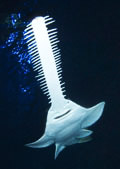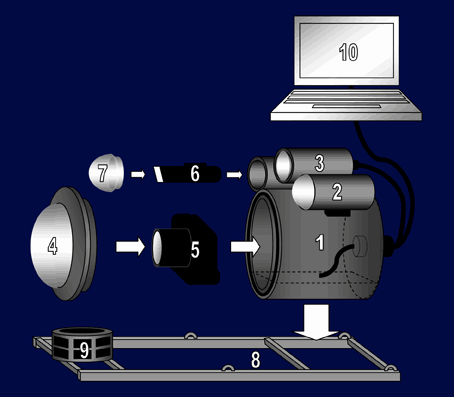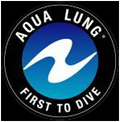|
|
|
SHARK INFO |
|
SHARK |
|
SHARK EVOLUTION |
|
|
|
SHARK DIVING |
|
SHARK DIVING 101 |
|
|
|
CONSERVATION |
|
|
|
PHOTOGRAPHY |
|
SHARK PHOTO TIPS |
|
|
|
RESOURCES |
|
|
|
WEB STUFF |
|
WHAT IS ELASMODIVER? Not just a huge collection of Shark Pictures: Elasmodiver.com contains images of sharks, skates, rays, and a few chimaera's from around the world. Elasmodiver began as a simple web based shark field guide to help divers find the best places to encounter the different species of sharks and rays that live in shallow water but it has slowly evolved into a much larger project containing information on all aspects of shark diving and shark photography. There are now more than 10,000 shark pictures and sections on shark evolution, biology, and conservation. There is a large library of reviewed shark books, a constantly updated shark taxonomy page, a monster list of shark links, and deeper in the site there are numerous articles and stories about shark encounters. Elasmodiver is now so difficult to check for updates, that new information and pictures are listed on an Elasmodiver Updates Page that can be accessed here:
|
|
_ |
|
Project Deep Shark
Objective: To build and deploy a remote submersible camera system capable of capturing high resolution images at a maximum depth of 2000 feet. The finished system must be extremely portable so that it can be manhandled easily into the water without the use of a lifting device. The system will be employed in the search for deep water predators in an effort to capture unique images of these animals in their natural environment.
|
|||||||||||||||||||||||||||
|
6. Nikon Strobe 7. Strobe housing dome port 8. Sled 9. Bait station 10. Topside monitoring station |
||||||||||||||||||||||||||
|
Housings: Four independent housings will be constructed to house the critical components of the hi res system. The housings will be made of hi grade aluminum (6061) capable of withstanding 3000psi. This will allow a range extension down to a max depth of 6000ft if desired in the future without any major reworking.
Sled: The sled will consist of an aluminum frame upon which the main housing and strobe housings can be secured. Forward of the main housing will be a bait station where appropriate bait can be attached to lure in the subject to be photographed. A bar will extend upwards and forwards from the rear of the housing so that a tether can be attached at a point which will keep the sled horizontal while being deployed.
Tether and Umbilical: A simple tether made of braided steel cable is to be connected to the sled by means of a shackle. An umbilical cable that controls the shutter release and transfers the image from the monitoring camera to the topside station will be secured at 10ft intervals to the braided cable. It is possible that the stainless cable may not be necessary if it is determined that there is a strong enough data cable available, i.e. one that is capable of supporting its own weight and that of the sled's as it descends.
Winch System: Depending on the cumulative weight of the housings, sled and cable, the winch may require a motorized control or it may be able to be operated by hand. As the spool will contain the data cable as well as the braided cable, a special connector must be installed that can transfer the information from the rotating spool to the static line to the laptop.
Surface Control Station: In keeping with the simple nature of the project the surface station does not need to be particularly sophisticated. The only necessary controls are the remote trigger mechanism and the station's monitoring capability. As well as these, the ability to record the activity witnessed by the low res video camera would be beneficial. Consequently the information will be channeled to a laptop capable of both tasks.
DSLR Camera: Although the ability to remotely control all settings on the submerged Nikon camera would be convenient it is not essential. The camera and strobes can be preset to make sure that the bait station is always perfectly in focus and appropriately lit. The camera settings will be pre-adjusted to facilitate the greatest depth of field so that the subject will remain in focus even when closer or further away than the optimum focal point.
Low Resolution Monitoring Camera: The monitoring camera must be sensitive enough to pick up activity at the bait station in very low light so that it is not necessary to attach a bright external light that will discourage sharks and other deep water predators from approaching. Although able to register an image in almost total darkness, the monitoring camera's sensor plate must be robust enough to withstand the brightness of the flashes emitted from the strobes when the Nikon camera takes a picture.
Costs of components and lead time associated with the project: Prices are based on cost of raw materials and labor.
Unless sponsorship can be arranged, it is estimated that construction will take approximately one year to complete.
If you have any questions about Elasmodiver please e-mail elasmodiver@gmail.com Elasmodiver Sponsorship opportunities are now available. If you would like further information please follow this link: Sponsor the quest to photograph the world's most elusive sharks |
|||||||||||||||||||||||||||
|
|
|||||||||||||||||||||||||||
|
|






















